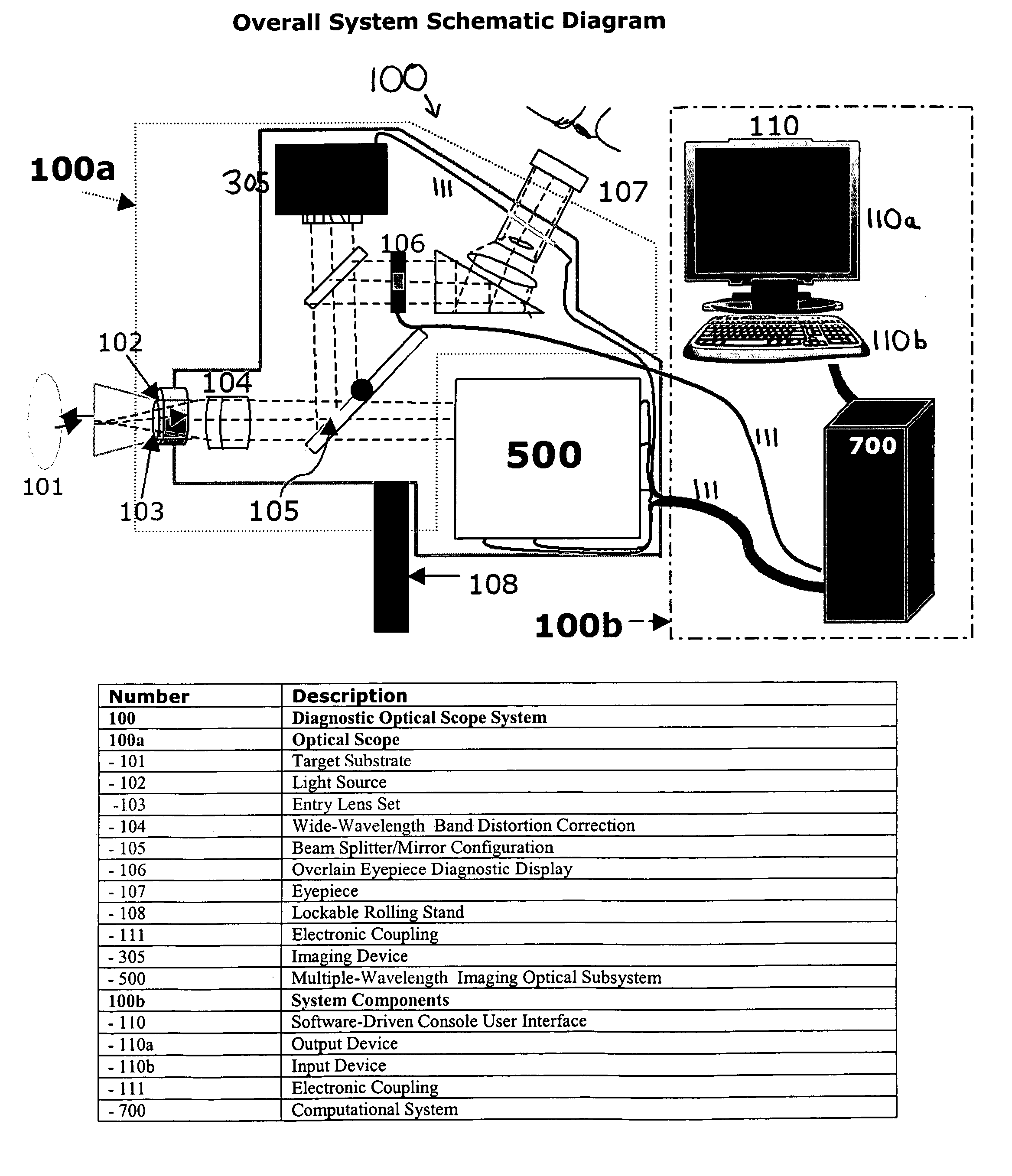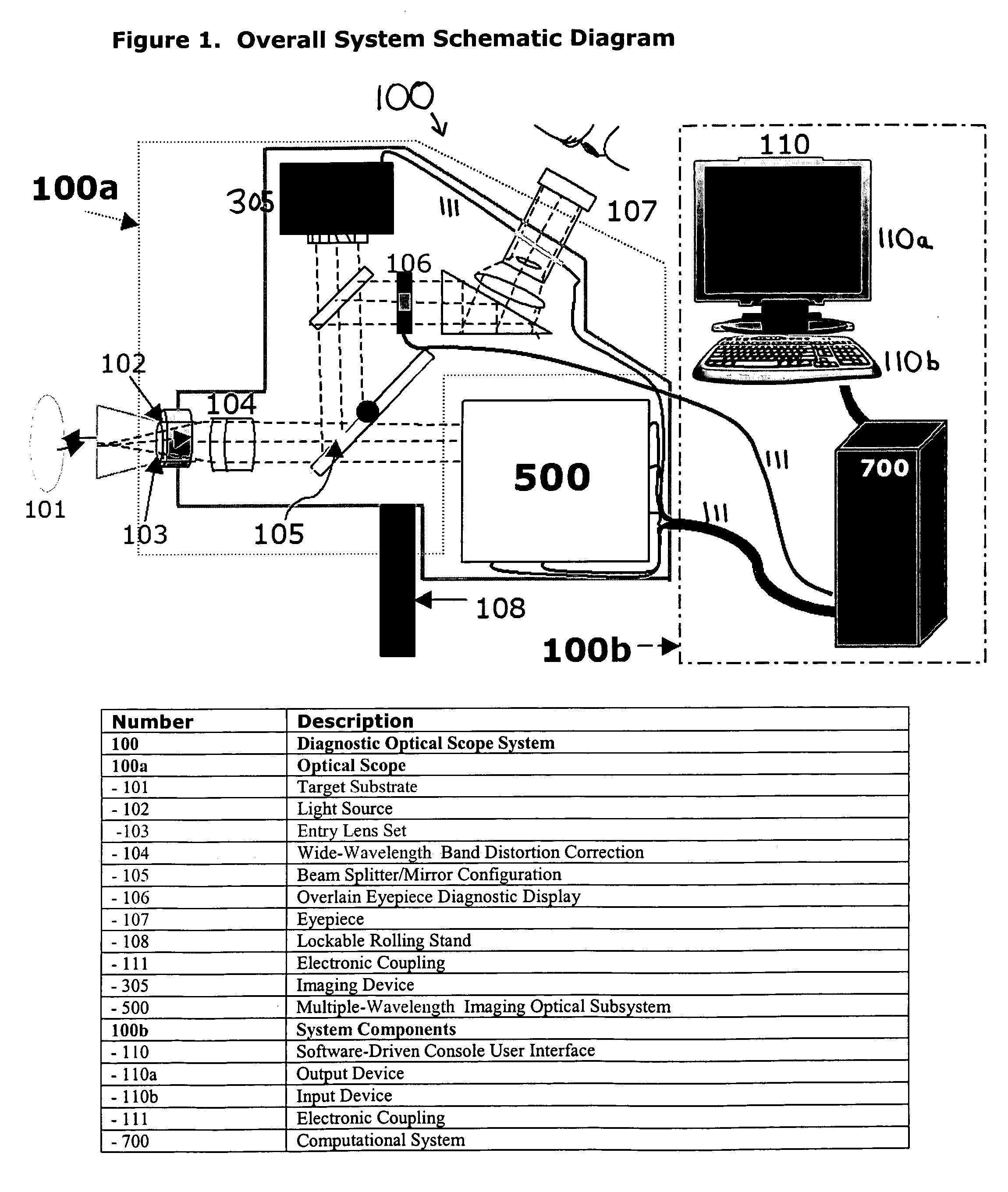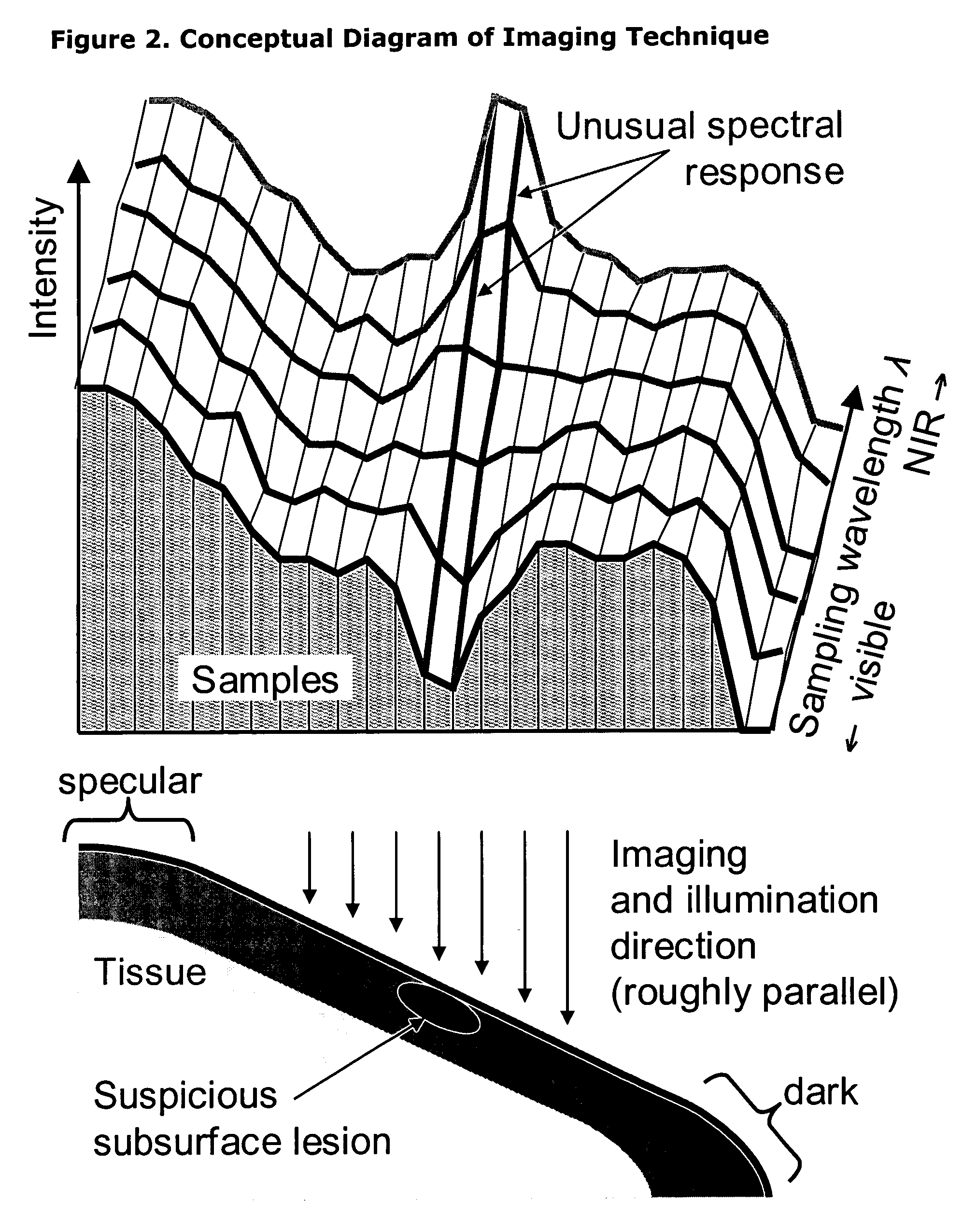Apparatus, system and method for optically analyzing a substrate
a substrate and optical analysis technology, applied in the field of apparatus, system and method for optical analysis of substrates, can solve the problem of colorectal cancer survival rate not as encouraging
- Summary
- Abstract
- Description
- Claims
- Application Information
AI Technical Summary
Benefits of technology
Problems solved by technology
Method used
Image
Examples
embodiment 1
7.1.1 Embodiment 1
[0252] In this embodiment, the system is designed to detect cervical pre-cancers and cancers. Several wavelengths of interest are known in the art and thus have already been identified for inclusion into such a system: 420 nm [GEOR02, MIRA02], 500 nm [NORD01], 849 nm [HORN99], 956 nm [HORN99], and 1450 nm [ALI04].
[0253] The MWIOS 500 can be constructed with five interference filters 502 for isolating and imaging the wavelengths of interest. The wavelengths of interest can be transmitted to an image processing pipeline, which will determine the optical properties of the target substrate. The system can be calibrated using tissue phantoms (as explained below in Section 7.2), and on in vitro tissue samples (as explained below in Section 7.3).
[0254] Two optical paths for the MWIOS are now described.
[0255] Referring now to FIG. 9, this embodiment depicts an MWIOS prototype 900, which generally includes the following components for analysis of a tissue phantom or in v...
embodiment 2
7.1.2 Embodiment 2
[0286] This embodiment is based on the schematic presented in FIG. 1. A standard colposcope, based on well-established colposcopic optical diagrams, can be constructed, into which all ancillary components associated with the invention can be integrated. The entrance portion of the optical path will be similar to the MWIOS described in Section 7.1.1, including a light source 102, a tissue target 101, an entry lens 103, 302 and an achromatic lens 104 for wide-band distortion correction. In this embodiment, in order to accommodate backward compatibility to a conventional optical scope, the full-system's optical path must include a BS / MC 105 after the entry lens set 103, 302.
[0287] The MWIOS 500 of this embodiment may include of four high-quality NIR-optimized CCD cameras, to individually image the 420-nm, 500-nm, 849-nm and 956-nm wavelengths, and one InGaAs camera, to image the 1450-nm wavelength. While the images at 849 nm and 956 nm would perhaps be better served ...
PUM
 Login to View More
Login to View More Abstract
Description
Claims
Application Information
 Login to View More
Login to View More - R&D
- Intellectual Property
- Life Sciences
- Materials
- Tech Scout
- Unparalleled Data Quality
- Higher Quality Content
- 60% Fewer Hallucinations
Browse by: Latest US Patents, China's latest patents, Technical Efficacy Thesaurus, Application Domain, Technology Topic, Popular Technical Reports.
© 2025 PatSnap. All rights reserved.Legal|Privacy policy|Modern Slavery Act Transparency Statement|Sitemap|About US| Contact US: help@patsnap.com



